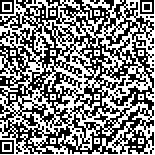下载中心
优秀审稿专家
优秀论文
相关链接
摘要

通过在辐射传输方程中添加热发射项的方式,直接把一个常用的可见光波段的冠层模型———SAIL 模型改造成热红外波段模型。该模型与Hapke 公式相比能更准确地计算多种农作物冠层的热红外辐射特性, 并能方便地作为一个基础模块融合到其他更高层次的热红外辐射模型中去。
Canopy radiance in thermal infrared (TIR) band mainly comes from emission of canopy itself. This differs very much from the situation of visible and near infrared (VNIR) band, in which reflection plays the major role. How- ever, the sophisticated canopy model in visible and near infrared band are still instructive to thermal infrared researches. Some recent works extend results of canopy BRDF model, such as Hapke's formula, to thermal infrared band through Kirchhoff's law that directional emissivity of a surface equals 1 minus its directional-hemispherical reflectance. However, this in-direct approach is not convenient because using Kirchhoff's law means to assume isothermal condition, but most natural surface is not isothermal. In this paper, we extend a typical canopy model in VNIR band, the SAIL model, to TIR band by adding terms of thermal emission in the radiation transfer equations. Analytic solution of the radiation transfer equations is derived. This enables us to directly simulate the emission and radiation transfer process inside the horizontal homogeneous canopy which is a good approximation to many kinds of crops. Leaf angle distribution (LAD) can be simulated discretely, and vertical canopy structure is also easily handled. Simulation of our model indicates that these factors play important role in directional signature of the canopy radiance. The model can also be used in some flexible ways, which enable it to act as basic modular in higher level TIR model. Here, we give two examples. In the first example, we use this model to calculate multiple scattering inside canopy and derive component effective emissivity. In the second example, the result of our RT model is adjusted by a row-structured GO model to simulate the real structure of winter wheat canopy as well as the footprint of radiometer. Comparison with field measured data indicates that the horizontal homogeneous assumption is also not valid in real cases, so the better choice is to integrate RT and GO model together.

